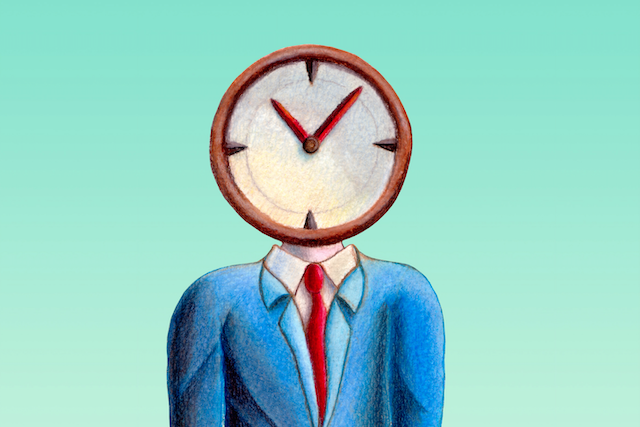We’ve all had those days that we’ve teetered in Tree Pose or tumbled out of a wobbly Warrior III. But even then, we’re still balancing. Good equilibrium helps us with mundane tasks, like carrying sacks of groceries and reaching for an item on a tall shelf, and with more complex endeavors such as dancing or lifting weights. When we struggle to steady ourselves in a yoga pose, we actually train the parts of our bodies that help us stay upright and grounded in a desired position. Here, we’ll examine the three main systems responsible for helping the body balance: visual, vestibular (inner ear), and somatosensory.
Visual: Eyesight helps us orient ourselves.
Vestibular: Nerves in the inner ear tell the brain where the head is, allowing us to adjust and stabilize our bodies.
Somatosensory: Physical feelings spark perceptions of where we are in space, so we can realign ourselves as needed.
See also 15 Poses Proven To Build Better Balance
See and Sense Your Way to Better Balance
Your nervous system integrates the information offered by each of the visual, vestibular, and somasensory systems, then sends that data to your brain to interpret as you work through a shape or movement.
• LOOK: Vision helps your brain orient your body in space. Gazing at a single focal point (drishti) ahead of you makes it easier to hold a rigorous pose like Warrior III, because if your gaze is firm, your brain has a static reference point to make necessary adjustments.
• To challenge your balance, close your eyes. Without visual input you’ll feel less stable, and your vestibular and somatosensory systems will scramble to pick up the slack.
• LISTEN: The vestibular system is a set of motion-sensitive sensors in your inner ear that help maintain equilibrium based on your position in space. When your head moves from vertical in Mountain Pose to horizontal in Warrior III, fluid in the bony labyrinth of your inner ear disrupts the hair cells (cilia) that make up your vestibular neuroepithelia, or the stem cells of your central nervous system. When these hair cells bend, electrical signals are sent to the vestibular nerve in your brain to determine what orientation to gravity your head is in—upright, sideways, upside down, or anything in between.
• You can explore vestibular input by moving from Mountain Pose to Warrior III. Try stimulating your vestibular system by slowly shaking your head no and nodding it yes while in any pose. Dynamically changing the orientation of your head this way may cause unsteadiness, which is ultimately a good thing. Just as pushing your muscles to the point of fatigue builds strength, challenging balance to the point of unsteadiness, over time, builds your ability to hold yourself upright with more ease.
• FEEL: Soma means body. The somatosensory system—located in your brain’s parietal lobe—processes physical sensations, which create awareness through touch, pressure, temperature, movement, and pain.
• To challenge this network, try practicing poses on a soft surface such as a folded blanket. Extra wobbling is good; it trains your neuromuscular system to respond to imbalances and regain stability.
See also The Physics + Power of Balancing Poses
Life in Motion: Navigating Change to Build Resilience
The ability to stay upright with good posture, like standing in Tree Pose, is what we call static balance. Proprioception—the ability to know where your body parts are in three-dimensional space—plays a huge role in staying vertical and grounded. Small sensors throughout your body, particularly in muscles and around your joints, are constantly sending messages to your brain about your position. Through mindful movement and practicing challenging balancing poses, these sensors become more acute and responsive.
Dynamic balance—maintaining equilibrium during movement such as walking, riding a bike, or stepping up onto the subway—comes into play when we flow through a Sun Salutation or transition from Mountain Pose to a demanding pose like Warrior III. One-legged balance poses offer fewer touch points (less somatic input), so your visual and vestibular systems compensate to steady you. This moving form of balance is crucial because most falls happen during transitions, rapid movements, or changes in direction. Since life is always in motion, yoga provides an opportunity to practice adapting to change and building resilience.
Research shows that balance work helps the brain develop new neural connections in key areas responsible for equilibrium and cognitive function. This helps us as we age. (According to the Centers for Disease Control, one out of four senior citizens falls at least once a year—often leading to serious injury and sometimes death). Strengthening stability through yoga can be a key to accident prevention, integrating components of mindfulness, body awareness, self-acceptance, and courage.
So the next time you find yourself wiggling in Warrior III, remember you’re taking care of both your present and future self.
Watch Yoga + Weights: Strengthen Your Core in Tree Pose
Images excerpted from Science of Yoga by Ann Swanson, and reprinted by permission of DK, a division of Penguin Random House, LLC. Copyright © 2019 Ann Swanson and Dorling Kindersley Limited.











